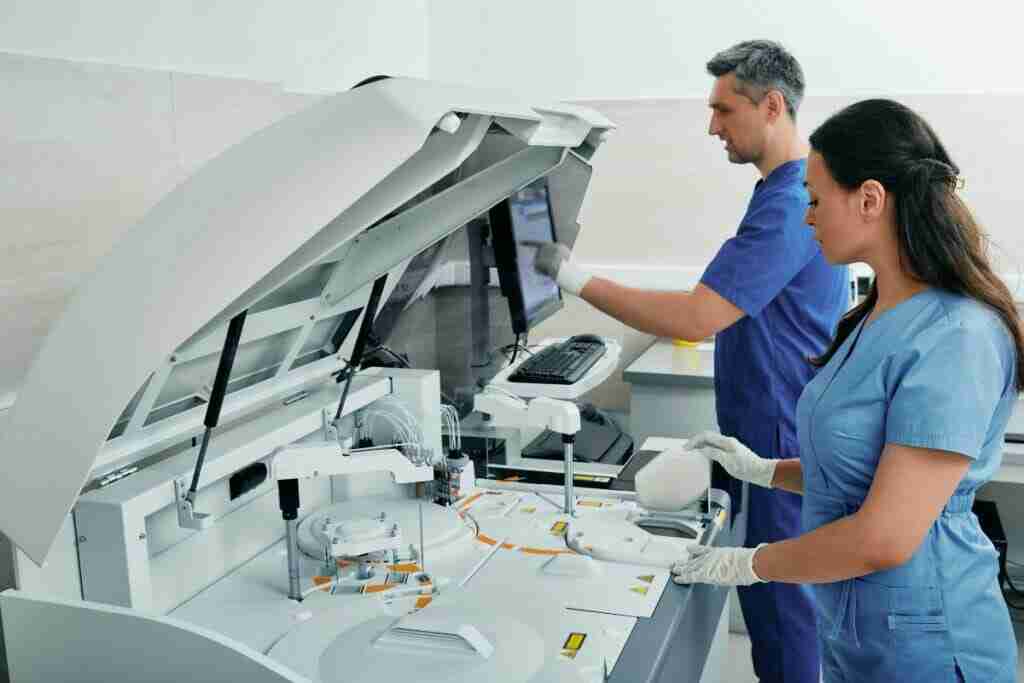Ever had an illness or health concern that has led you to seek out the assistance of a doctor? If you have, then you have most definitely benefited from the work of a pathologist! Still, given the fact that you rarely see a pathologist, what is pathology exactly, and what is the role of a pathologist?

This is what we are here to help answer. Below, we are going to be taking a closer look at what a pathologist is, as well as how you can go about becoming a pathologist if this is something that you might be interested in.
So, without further ado, just keep on reading to learn more about what pathology is, as well as what a pathologist does.
What Is Pathology?
So, what is pathology? Generally speaking, pathology refers to the study of nature, causes and the different effects of disease, and the name comes from the Greek word “Pathos” which essentially means suffering.
Due to this, this means that all individuals that work in the field of pathology are doctors that specialize in studying disease and illness, which is why they are called pathologists.
Unlike other types of doctors, pathologist doctors have been given additional training within all areas of laboratory techniques in order to equip them with the ability to effectively study illnesses, diseases and more.
Usually, pathologists will often work alongside scientists that have training within medicine in a laboratory or similar environment
Even though the role of a pathologist can vary from role to role, the majority of pathologists will typically find themselves studying tissues and other sample taken the body in order to diagnose an illness, monitor any ongoing medical conditions that a patient might be experiencing, as well as help to offer insight into the best course of treatment for any diagnosis that might be made.
For example, a pathologist will typically find themselves examining a sample of tissue taken from a patient in order to check for infections, bateria or certain strains of virus.
As a side note here, it is worth noting that the majority of cancer diagnoses are typically made through the observations that are made by a pathologist while examining tissue samples provided by other health professionals within a patient’s care team.
After the pathologist has finished examining the tissue samples, they will then typically be required to create something that is known as a pathology report.
Within the report, the other health professionals of the patient care team will then be able to view all of the information, findings and conclusions made by the pathologist, including potential diagnoses, updates of ongoing health conditions as well as guidance on relevant treatment options to aid in recovery.
Despite the fact that many patients do not find themselves ever interacting with a pathologist, a pathologist is an essential part of all patient care teams.
The main reason for this is because the majority of the work undertaken by the pathologist takes place in a laboratory environment in order to provide proper diagnosis, monitor ongoing health conditions as well as help provide vital insight and guidance into treatment plans.
How Do You Become A Pathologist?

Given the fact that pathologists often find themselves working behind the scene with little first-point contact with patients – it’s only natural that many prospective pathologists might be wondering how it is possible to work as a pathologist in a laboratory.
Well, similar to other types of medical professions, if you have plans on becoming a pathologist you will be required to undertake at least four years of study at an undergraduate level in a relevant field.
After you have then successfully done this, you will then be required to spend another four years studying another relevant medical course at an accredited medical school.
At the time of writing this guide, pathology is not currently offered as a singular degree. Due to this, for those that are interested in becoming a pathologist and undertaking a career within pathology, you will be required to take up something that is known as a residency.
Although, there might be a few exceptions to the requirement of training to become a pathologist depending on what medical school you choose to further your studies at.
Your chosen medical school will be able to help you get onto a relevant residency program so that you can begin specializing within your chosen career path of pathology.
During your residency, you will typically be required to study and train with expert pathologists as you gain hands-on experience of working within a laboratory.
This is also a great opportunity to not only gain experience, but also have an insight into the different areas of pathology including both anatomical and clinical.
The general length of a residency is typically around three years for those specializing in either clinical pathology or anatomical pathology.
However, for those that would like to specialize within both aspects of pathology, the typical length of a residency is usually at least four years.
How Much Does A Pathologist Make?
As you might have already guessed from everything that we have already spoken about above, pathology is a vital part of diagnosing and treating illnesses and other conditions.
Due to this, the average salary that a pathologist can expect to make is around $297,000 as of 2023. Although, this can vary depending on level of experience.
Wrapping Up
You’ve made it to the end of the guide. After taking the time to read through all of the above, we are hoping that you now have a much better understanding of what pathology is, as well as whether or not a career as a pathologist is going to be the right fit for you.
Thanks for taking the time to read through this guide, and goodbye for now!
- How Much Do Welders Make? - April 24, 2023
- What Is The Workplace Maturity Model? - April 24, 2023
- What Is A Midwife? - April 24, 2023










